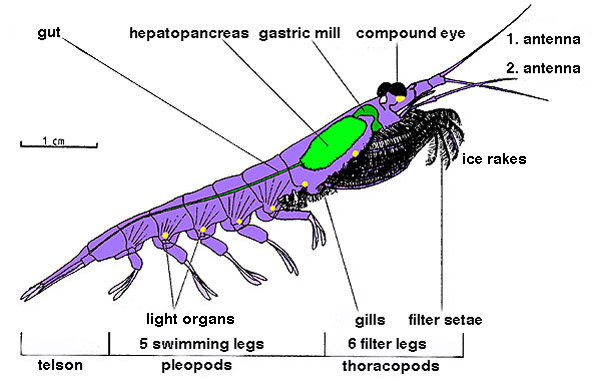|
Sarritor Frenatus
The sawback poacher (''Sarritor frenatus'') is a species of fish in the family Agonidae.''Sarritor frenatus'' at www.fishbase.org. It was described by in 1896, originally under the genus ''''.Gilbert, C. H., 1896 (9 Dec.) ef. 1628''The ichthyological collections of the steamer Albatross during the years 1890 and 1891.'' United States Commission of Fish and Fisheries, Report of the Commissioner v. 19 (for 1893) (art. 6): 39 ... [...More Info...] [...Related Items...] OR: [Wikipedia] [Google] [Baidu] |
Charles Henry Gilbert
Charles Henry Gilbert (December 5, 1859 in Rockford, Illinois – April 20, 1928 in Palo Alto, California) was a pioneer ichthyologist and Fisheries science, fishery biologist of particular significance to natural history of the western United States. He collected and studied fishes from Central America north to Alaska and described many new species. Later he became an expert on Pacific salmon and was a noted conservation movement, conservationist of the Pacific Northwest. He is considered by many as the intellectual founder of American fisheries biology. He was one of the 22 "pioneer professors" (founding faculty) of Stanford University. Early life and education Born in Rockford, Illinois, Gilbert spent his early years in Indianapolis, Indiana, where he came under the influence of his high school teacher, David Starr Jordan (1851‒1931). When Jordan became Professor of Natural History at Butler University in Indianapolis, Gilbert followed and received his B.A. degree in 187 ... [...More Info...] [...Related Items...] OR: [Wikipedia] [Google] [Baidu] |
Kamchatka Flounder
The Kamchatka flounder, ''Atheresthes evermanni'', is a flatfish of the family Pleuronectidae. It is a demersal fish that lives at depths of between and . Its native habitat is the temperate waters of the northern Pacific. It can grow as long as in length, and can weigh up to . Range The native habitat of the Kamchatka flounder ranges from the Shelikof Strait and the Aleutian Islands in Alaska, across the Bering Sea, to the Gulf of Anadyr, Kamchatka Peninsula and the seas of Okhotsk and Japan. In the east of its range the Kamchatka flounder overlaps with the range of the arrowtooth flounder, and similarities in appearance between the two species mean that they were not distinguished in commercial fishing until 2007. Diet The Kamchatka flounder's diet consists of fish and zoobenthos organisms such as squid, cuttlefish, shrimps, prawns, amphipods, mysids, mollusks and marine worms, though the most important prey item is the walleye pollock, which accounted for 56-86% of ... [...More Info...] [...Related Items...] OR: [Wikipedia] [Google] [Baidu] |
Sarritor
''Sarritor'' is a genus of poachers native to the northern Pacific Ocean. Species There are currently three recognized species in this genus: * '' Sarritor frenatus'' ( C. H. Gilbert, 1896) (Sawback poacher) * '' Sarritor knipowitschi'' Lindberg Lindberg is a municipality in the district of Regen in Bavaria in Germany in the immediate neighbourhood of the larger town Zwiesel. Location Lindberg lies in the Danube Forest (''Donau-Wald'') region in the middle of the Bavarian Forest on ... & Andriashev, 1937 * '' Sarritor leptorhynchus'' ( C. H. Gilbert, 1896) (Longnose poacher) References Agoninae {{Scorpaeniformes-stub ... [...More Info...] [...Related Items...] OR: [Wikipedia] [Google] [Baidu] |
Polychaete
Polychaeta () is a paraphyletic class (biology), class of generally marine invertebrate, marine annelid worms, common name, commonly called bristle worms or polychaetes (). Each body segment has a pair of fleshy protrusions called parapodia that bear many bristles, called chaetae, which are made of chitin. More than 10,000 species are described in this class. Common representatives include the lugworm (''Arenicola marina'') and the Alitta virens, sandworm or Alitta succinea, clam worm ''Alitta''. Polychaetes as a class are robust and widespread, with species that live in the coldest ocean temperatures of the abyssal plain, to forms which tolerate the extremely high temperatures near hydrothermal vents. Polychaetes occur throughout the Earth's oceans at all depths, from forms that live as plankton near the surface, to a 2- to 3-cm specimen (still unclassified) observed by the robot ocean probe Nereus (underwater vehicle), ''Nereus'' at the bottom of the Challenger Deep, the deepes ... [...More Info...] [...Related Items...] OR: [Wikipedia] [Google] [Baidu] |
Shrimp
Shrimp are crustaceans (a form of shellfish) with elongated bodies and a primarily swimming mode of locomotion – most commonly Caridea and Dendrobranchiata of the decapod order, although some crustaceans outside of this order are referred to as "shrimp". More narrow definitions may be restricted to Caridea, to smaller species of either group or to only the marine species. Under a broader definition, ''shrimp'' may be synonymous with prawn, covering stalk-eyed swimming crustaceans with long, narrow muscular tails (abdomens), long whiskers ( antennae), and slender legs. Any small crustacean which resembles a shrimp tends to be called one. They swim forward by paddling with swimmerets on the underside of their abdomens, although their escape response is typically repeated flicks with the tail driving them backwards very quickly. Crabs and lobsters have strong walking legs, whereas shrimp have thin, fragile legs which they use primarily for perching.Rudloe & Rudloe (2009 ... [...More Info...] [...Related Items...] OR: [Wikipedia] [Google] [Baidu] |
Isopod
Isopoda is an order of crustaceans that includes woodlice and their relatives. Isopods live in the sea, in fresh water, or on land. All have rigid, segmented exoskeletons, two pairs of antennae, seven pairs of jointed limbs on the thorax, and five pairs of branching appendages on the abdomen that are used in respiration. Females brood their young in a pouch under their thorax. Isopods have various feeding methods: some eat dead or decaying plant and animal matter, others are grazers, or filter feeders, a few are predators, and some are internal or external parasites, mostly of fish. Aquatic species mostly live on the seabed or bottom of freshwater bodies of water, but some taxa can swim for a short distance. Terrestrial forms move around by crawling and tend to be found in cool, moist places. Some species are able to roll themselves into a ball as a defense mechanism or to conserve moisture. There are over 10,000 identified species of isopod worldwide, with around 4,5 ... [...More Info...] [...Related Items...] OR: [Wikipedia] [Google] [Baidu] |
Euphausiid
Krill are small crustaceans of the order Euphausiacea, and are found in all the world's oceans. The name "krill" comes from the Norwegian word ', meaning "small fry of fish", which is also often attributed to species of fish. Krill are considered an important trophic level connection – near the bottom of the food chain. They feed on phytoplankton and (to a lesser extent) zooplankton, yet also are the main source of food for many larger animals. In the Southern Ocean, one species, the Antarctic krill, ''Euphausia superba'', makes up an estimated biomass of around 379,000,000 tonnes, making it among the species with the largest total biomass. Over half of this biomass is eaten by whales, seals, penguins, seabirds, squid, and fish each year. Most krill species display large daily vertical migrations, thus providing food for predators near the surface at night and in deeper waters during the day. Krill are fished commercially in the Southern Ocean and in the waters around Jap ... [...More Info...] [...Related Items...] OR: [Wikipedia] [Google] [Baidu] |
Amphipod
Amphipoda is an order of malacostracan crustaceans with no carapace and generally with laterally compressed bodies. Amphipods range in size from and are mostly detritivores or scavengers. There are more than 9,900 amphipod species so far described. They are mostly marine animals, but are found in almost all aquatic environments. Some 1,900 species live in fresh water, and the order also includes the terrestrial sandhoppers such as ''Talitrus saltator''. Etymology and names The name ''Amphipoda'' comes, via New Latin ', from the Greek roots 'on both/all sides' and 'foot'. This contrasts with the related Isopoda, which have a single kind of thoracic leg. Particularly among anglers, amphipods are known as ''freshwater shrimp'', ''scuds'', or ''sideswimmers''. Description Anatomy The body of an amphipod is divided into 13 segments, which can be grouped into a head, a thorax and an abdomen. The head is fused to the thorax, and bears two pairs of antennae and one pair of se ... [...More Info...] [...Related Items...] OR: [Wikipedia] [Google] [Baidu] |
Offal
Offal (), also called variety meats, pluck or organ meats, is the organs of a butchered animal. The word does not refer to a particular list of edible organs, which varies by culture and region, but usually excludes muscle. Offal may also refer to the by-products of milled grains, such as corn or wheat. Some cultures strongly consider offal as food to be taboo, while others use it as everyday food or even as delicacies. Certain offal dishes—including '' foie gras'', '' pâté'', and haggis —are internationally regarded as gourmet food in the culinary arts. Others remain part of traditional regional cuisine and may be consumed especially during holidays. This includes sweetbread, Jewish chopped liver, U.S. chitterlings, Mexican menudo, as well as many other dishes. On the other hand, intestines are traditionally used as casing for sausages. Depending on the context, ''offal'' may refer only to those parts of an animal carcass discarded after butchering or skinning ... [...More Info...] [...Related Items...] OR: [Wikipedia] [Google] [Baidu] |
Careproctus Cyclocephalus
''Careproctus'' is a genus of snailfishes found in benthic and benthopelagic habitats in the Atlantic, Pacific, Arctic and Southern Oceans. Whether they truly are absent from the Indian Ocean (except for a couple of species in Subantarctic waters) is unknown and might be an artifact of limited sampling. They range from shallow coastal seas in the far north of their range to the abyssal zone, at depths of . In the Northern Hemisphere they mostly live shallower than ''Paraliparis'', but this pattern is reversed in the Southern Hemisphere. Although almost entirely restricted to very cold waters, a single species, ''C. hyaleius'', lives at hydrothermal vents. Its generic name is derived from the Ancient Greek κάρα (''kara'', "face, head") and πρωκτός (''prōktos'', "anus"), therefore literally meaning "butt-face". ''Careproctus'' have one pair of nostrils and a ventral suction disc but lack a pseudobranch. They are tadpole-like in shape and reach up to in standard le ... [...More Info...] [...Related Items...] OR: [Wikipedia] [Google] [Baidu] |
Aleutian Skate
The Aleutian skate (''Bathyraja aleutica'') is a species of skate in the family Arhynchobatidae. It lives in depths ranging from 15 to 1602 meters in North Pacific Ocean from northern parts of Japan to the Aleutian Islands and southeastern Alaska. It has maximum total length of 161 centimeters. It is the most abundant species of the Bathyraja genus in the eastern Bering Sea slope and throughout the Gulf of Alaska. It is oviparous and produces oblong egg capsules with stiff horn in each corner. The embryo gets its nutrients from the yolk Among animals which produce eggs, the yolk (; also known as the vitellus) is the nutrient-bearing portion of the egg whose primary function is to supply food for the development of the embryo. Some types of egg contain no yolk, for example bec ... which is at first utilized for growth at a relatively constant rate but later in the development the yolk is absorbed rapidly. References * Bathyraja Taxa named by Charles Henry Gilbert Fi ... [...More Info...] [...Related Items...] OR: [Wikipedia] [Google] [Baidu] |
Pacific Halibut
The Pacific Ocean is the largest and deepest of Earth's five oceanic divisions. It extends from the Arctic Ocean in the north to the Southern Ocean (or, depending on definition, to Antarctica) in the south, and is bounded by the continents of Asia and Oceania in the west and the Americas in the east. At in area (as defined with a southern Antarctic border), this largest division of the World Ocean—and, in turn, the hydrosphere—covers about 46% of Earth's water surface and about 32% of its total surface area, larger than Earth's entire land area combined .Pacific Ocean . '' Britannica Concise.'' 2008: Encyclopædia Britannica, Inc. The centers of both the |

.jpg)


.jpg)